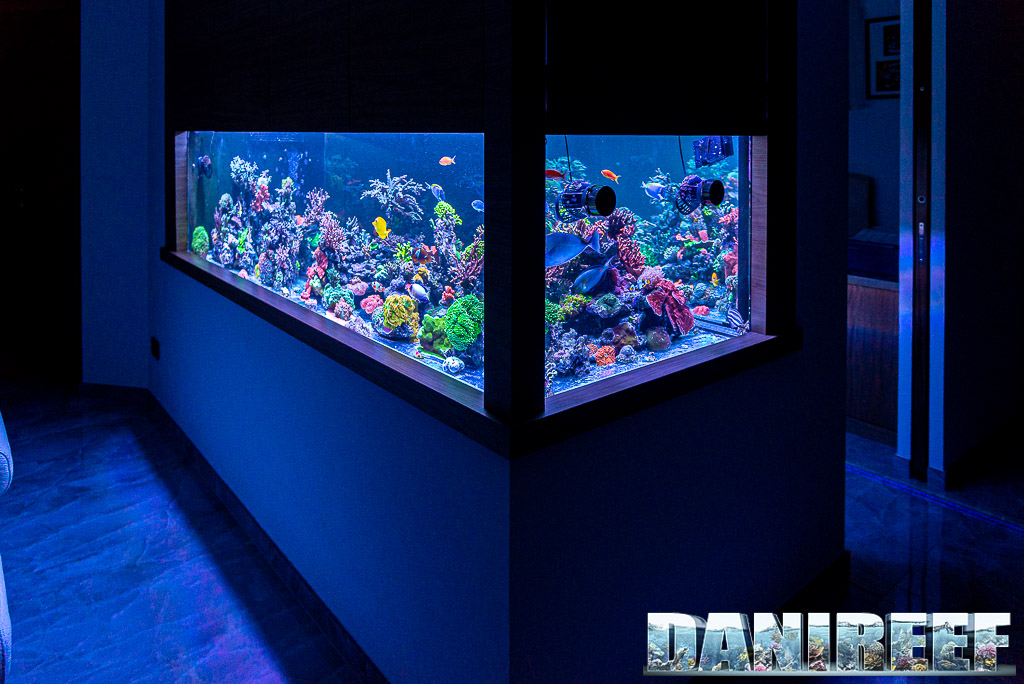
This age-old question comes easily out among the aquarists, and the answer will surprise you.
This article is also available in: italiano
But first of all let’s give some definitions in order to better understand what we’re talking about. Let’s start from the one that we all should know better, that is the Berlin.
The Berlin Method in short
At the end of the seventies thanks to the Berlin Aquarium Society has started a different experimentation on marine aquaristic, thanks to the aquarist and writer Peter Wilkens. A trial protracted until the beginning of the eighties, but that today it goes on all over the world. This new method, named Berlin Method, considers the marine aquarium as a balanced ecosystem (or more like pseudo-balanced, because its environment is way smaller than the sea) to be studied in its complex and not to be considered as a set of disconnected parts, in antithesis with what was the main direction at time.
The Berlin Method has its own rules:
- use of 1 kg of living rocks every 5 liters of water;
- intense lighting;
- strong movement;
- use of the skimmer;
- reintegration of calcium and carbonates;
- use of active carbon.
The DSB in short
Starting from the same biological basis of the Berlin Method the question came if the function of the bacterial substrate could have been performed by something else aside the usual and bulky living rocks. As it’s known, the tranformation of nitrate in oxygen and azote primarily happens in anoxic zones, that are environments with a low level of oxygen, it’s the most critical part. So new experiments have been done, with a high sandy bottom where it should be created the conditions for developping anoxic zones in the deeper coat.
So firstly came the Jaubert Method, and then it arrived the one that today we know simply as DSB: it adopts a lay of sand without building a reduced circulation area; it also adds living rocks, but in smaller number than the Berlin; and the skimmer. In this way it creates what is commonly called DSB: Deep Sand Bed.
So?

I think that at the end the answer is easy to spot. The DBS is like the Berlin except for one difference: a part of the living rocks has been substituted by the sand as bacterial substrate.
The other elements are still necessary: lighting, active carbons, skimmer, restore of calcium and carbonates and strong movement.
Technically it has only been changed a portion of rocks in sand substrate.

In truth, the quantity of sand in aquarium used in a DBS is huge compared to the quantity of rocks in the Berlin Method. In fact, the sandy lay should be 12 cm in order to let the anoxic conditions form: they’re for the denitrification, that is the split of the nitrates in azote and oxygen.That’s why in order to do a real comparison we should use in both aquariums the same weight of filtering material.
If we compare an aquarium of 300 liters, we would have about 60 kg of living rocks (in a relationship of 1:5), reduced in the last years to 40 kg, in case of a Berlin aquarium, while for 12 cm of sand we should use, more or less, 72 liters of water (120×50 cm of base, 12 cm of height), that is 140 kg di sand.
As you can see the situation is quite different. On the one hand we have a bacterial substrate between 40 and 60 kg, 140 kg of sand plus 20 kg of living rocks on on the other.
That’s why the DBS not only seems, but actually is, more biologically efficient, because it uses a greater amount of substrate. If used the same weight in kg the biological difference would be canceled.
Advantages and disadvantages of the DSB compared to the classic Berlin
But at this point we have a system with a higher biological efficiency, and also a greater weight, as well as a greater encumbrance in tank given by the sand. This leads to substancial differencies:
- Greater biological efficiency in reducing the nutrients.
- Possibility to use a less performing skimmer.
- Greater biodiversity at the level of marine organisms given by the sand.
- Restricted choice of fish and marine organisms compared to the Berlin method, because you have to choose animals that don’t cause problems to the sandy bottom.
- The movement in aquarium becomes complicaated, because it’s difficult to use a high flow that doesn’t create holes in the DSB.
- The aquarium should be higher than an aquarium without sand, caused by the layer of the DSB. This means that, with the same free space dedicated to fish and corals, a higher aquarium (10 cm at least), then havier, more expensive, and with thicker glasses.
- Eventuality that the bottom doesn’t work biologically or that can create a cohesive and thick layer.
- Longer maturation time.
Conclusions
Is there a winner? Yes, at the end they’re the same thing, only the bacterial substrate and quantity change. We know that with the same volume of the substrate it would be obtained the same result, so we can give more importance to the sand for a more clean layout, but knowing also what it involves, that is weight, costs, maturation and movement.
What do you think? Let us know in the comments or in one of our social channels.
















Grandissimo articolo, molto crudo ed essenziale. Alla fine è una semplice disponibilità di supporti per batteri. Complimenti